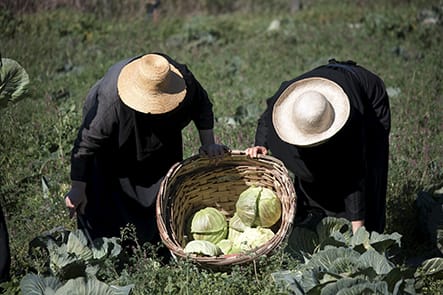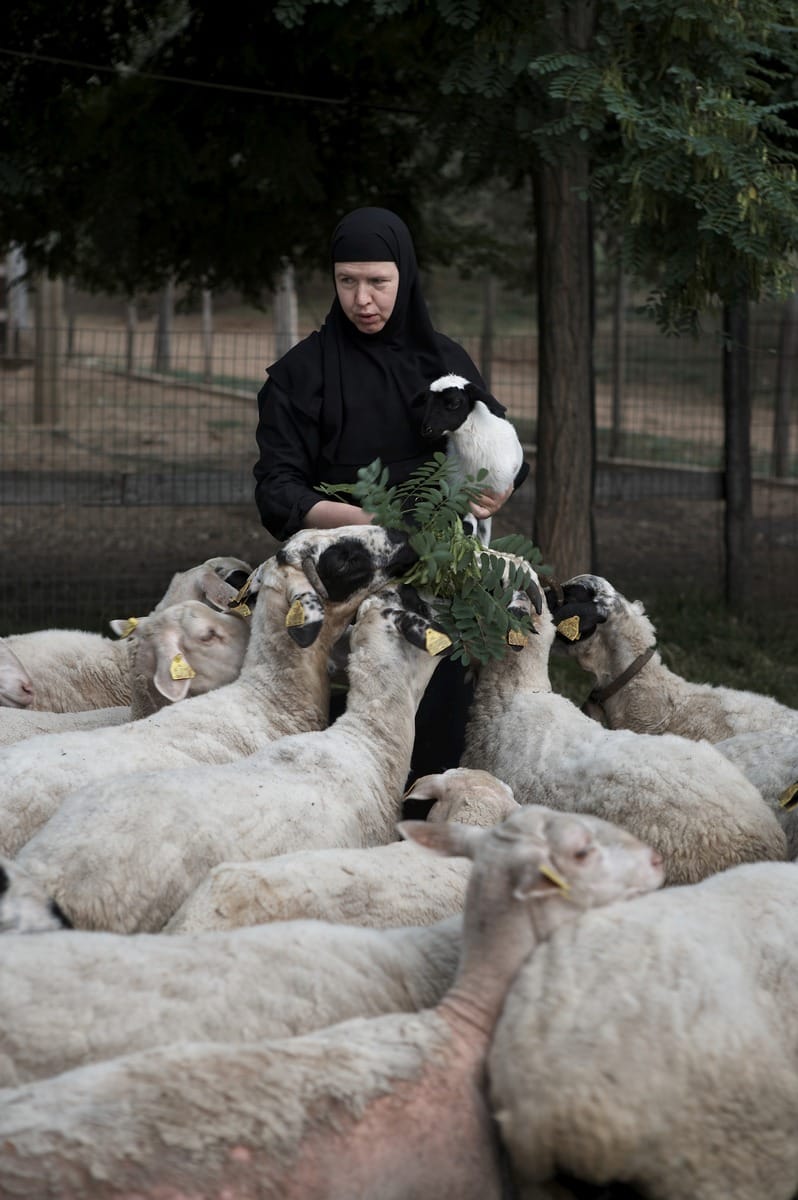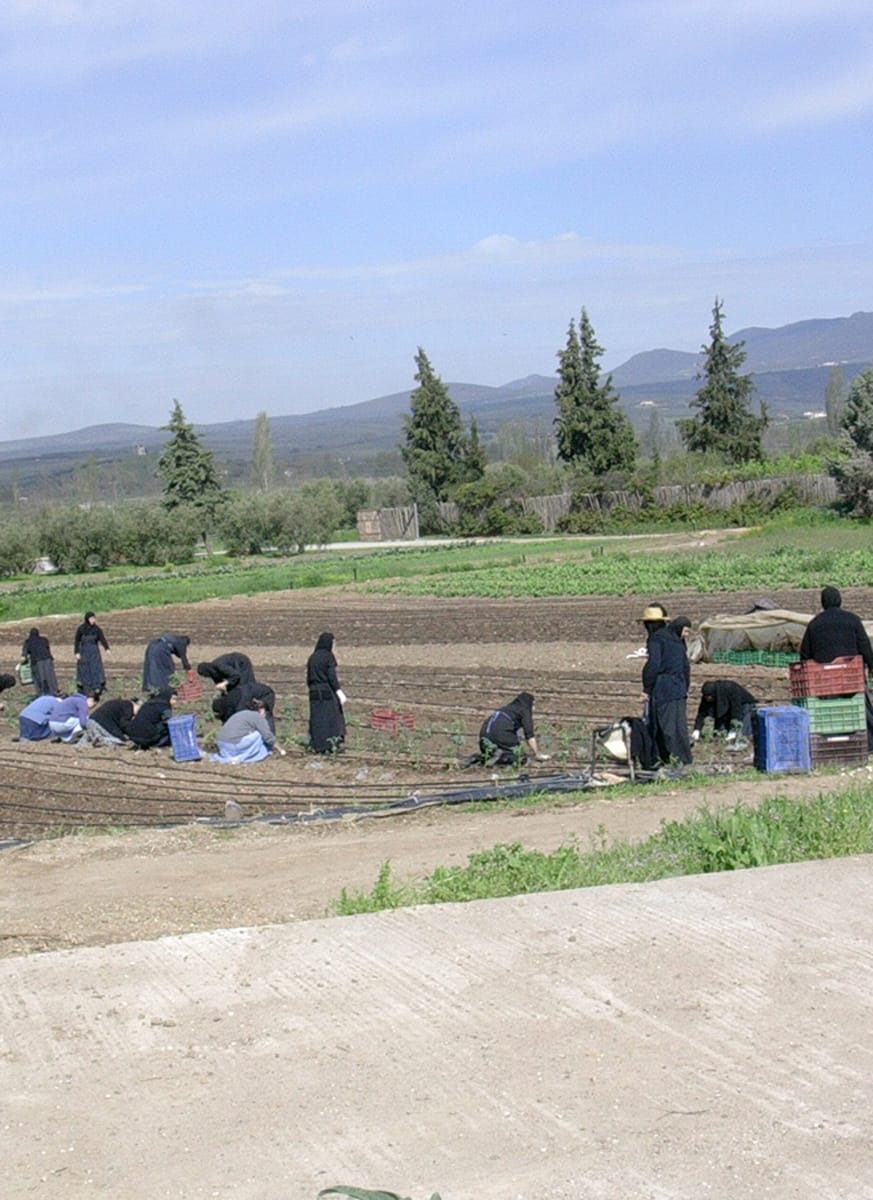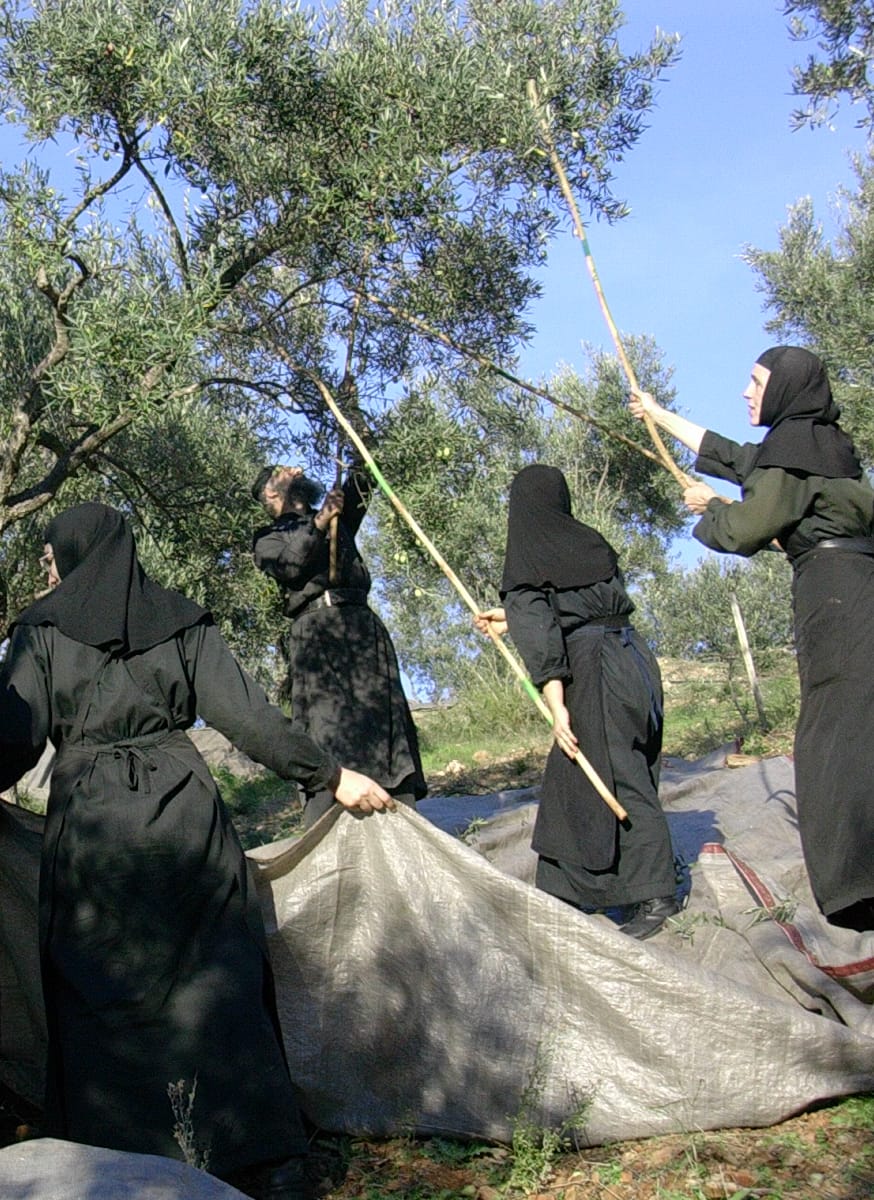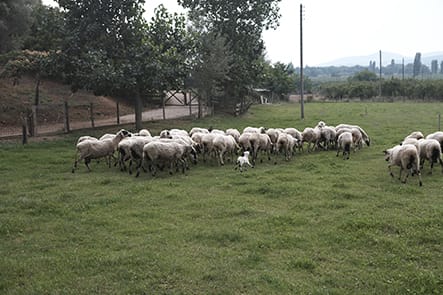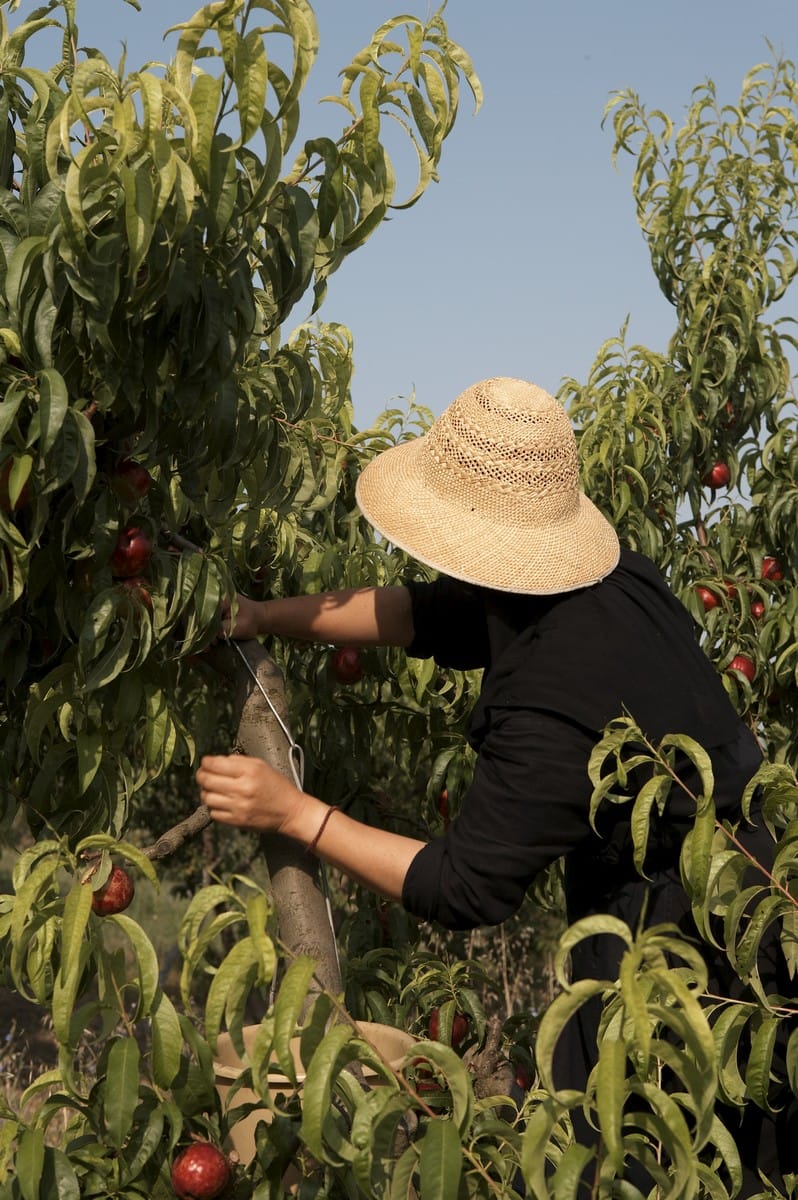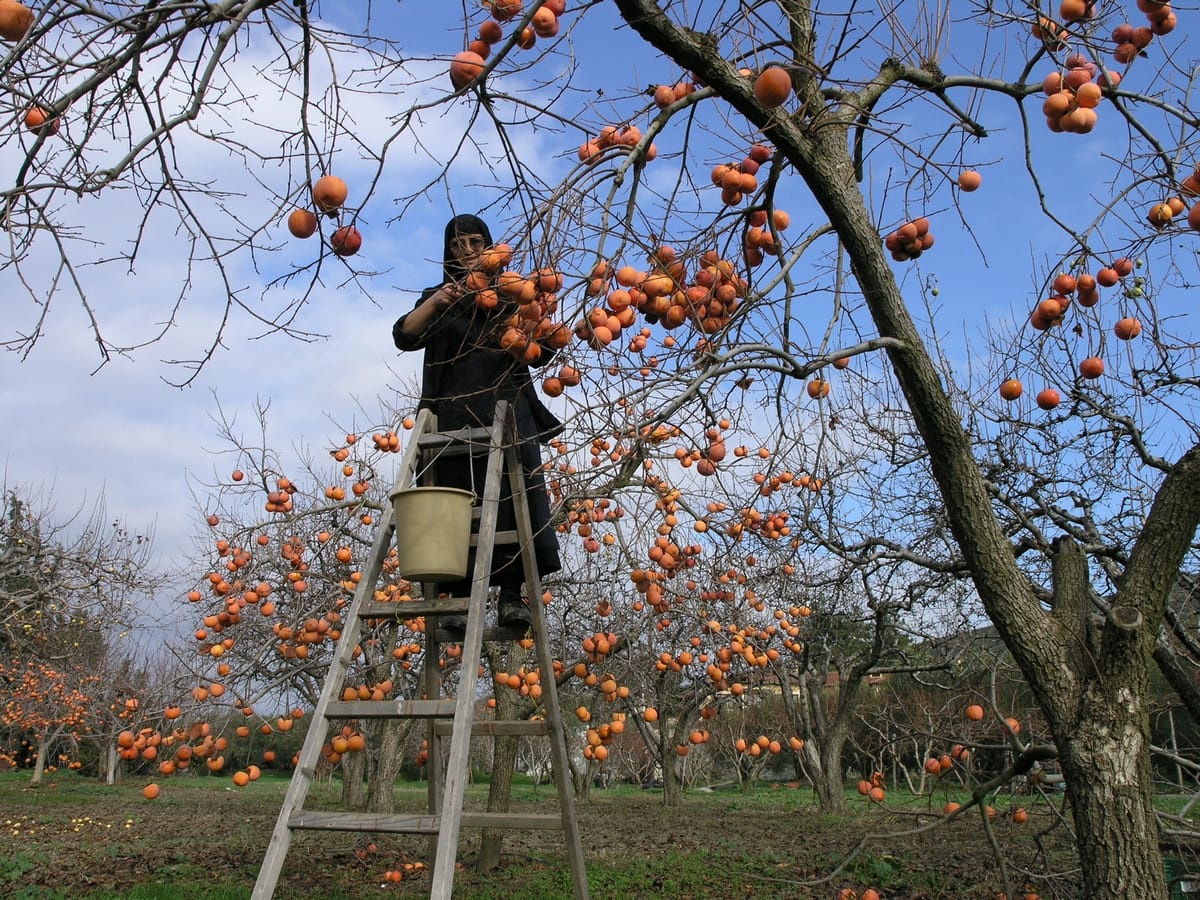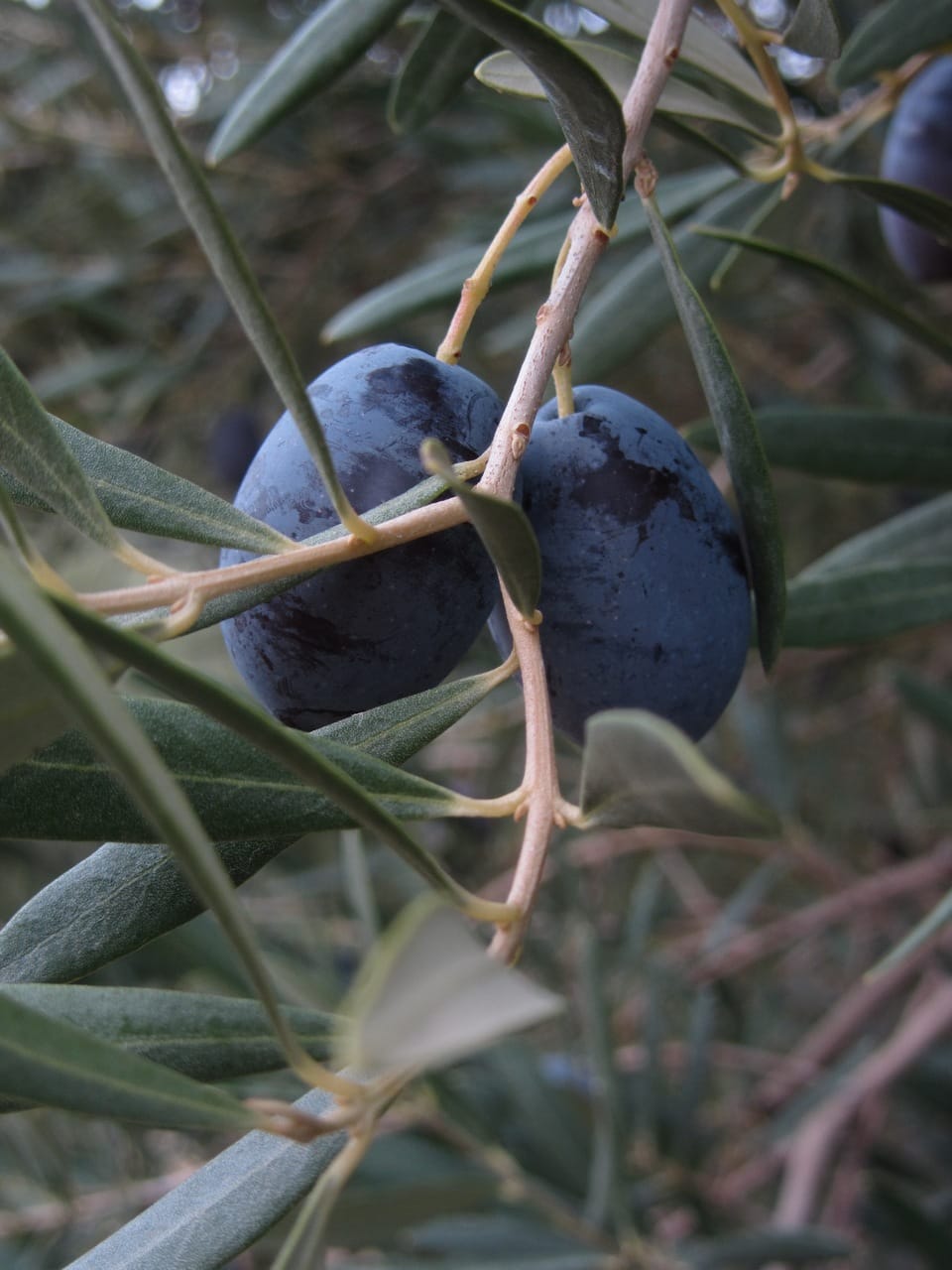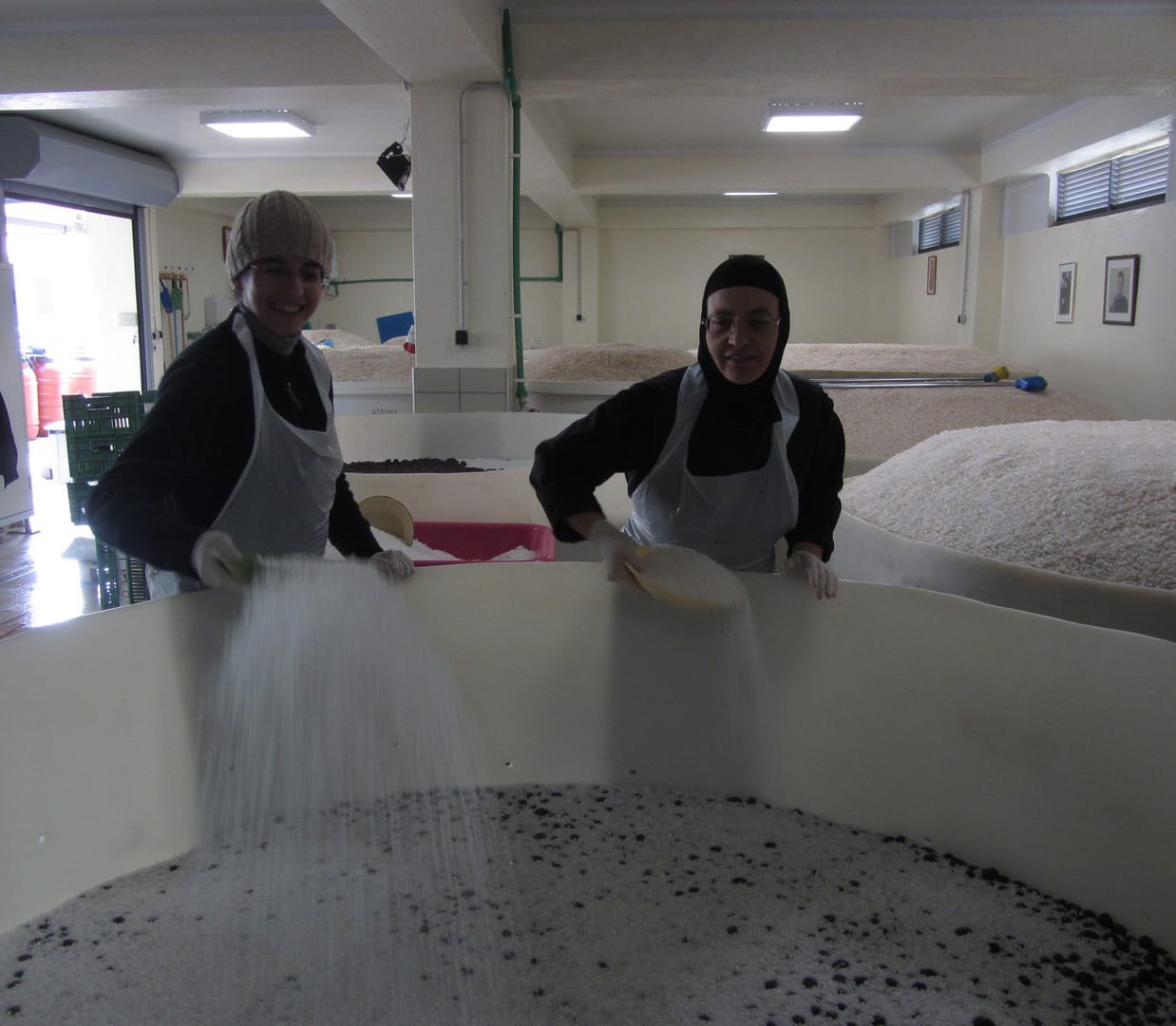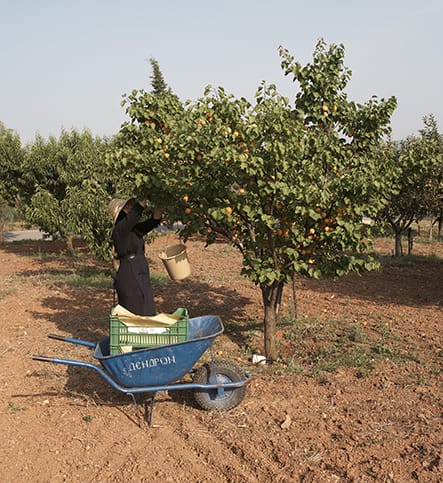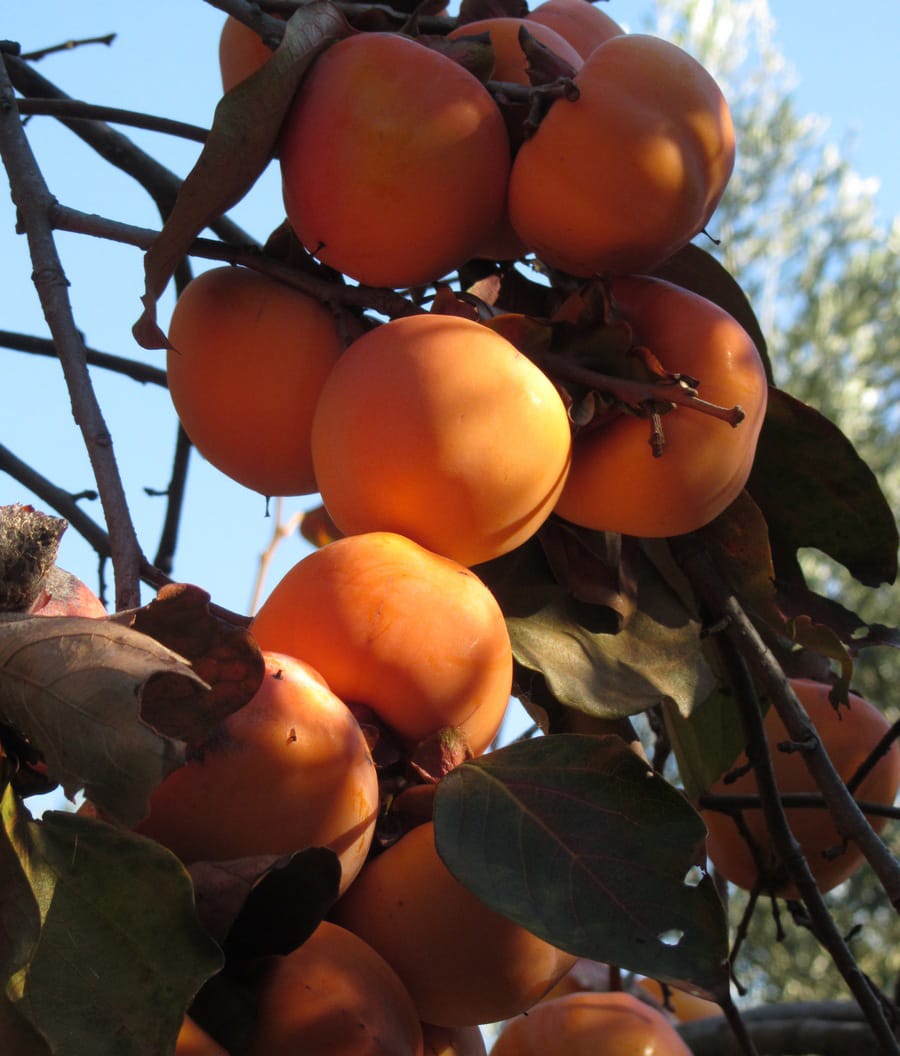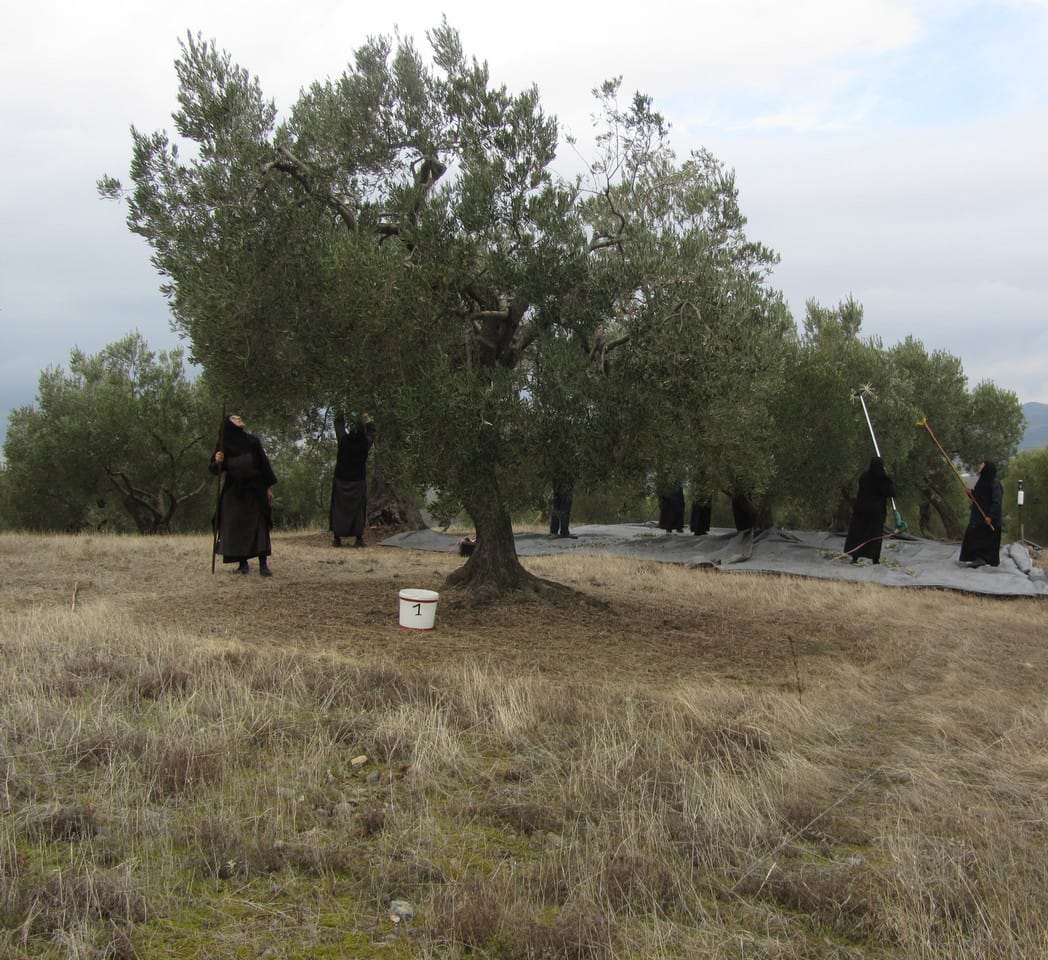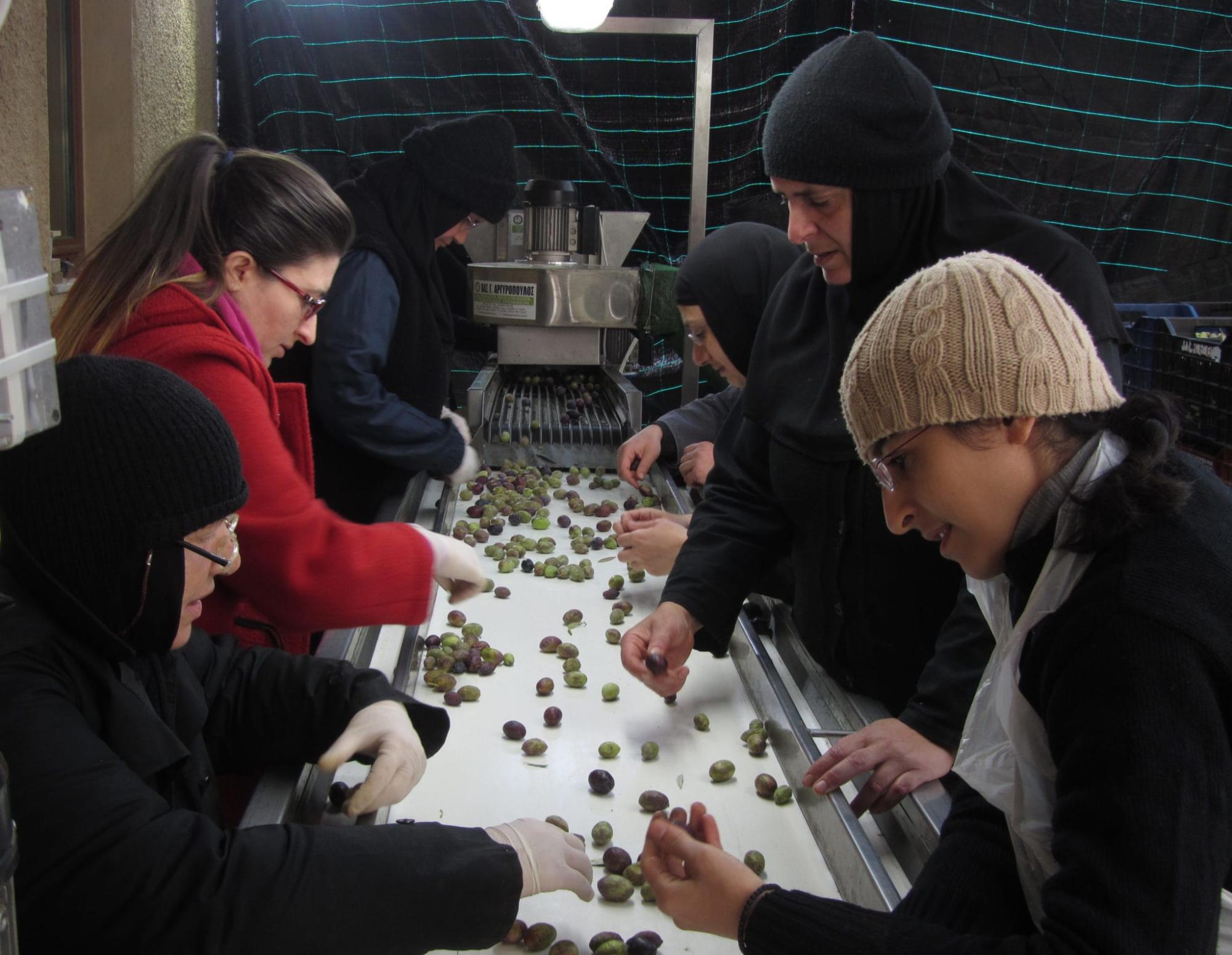THE CONVENT FARM
THE CONVENT FARM
«It is in the highest degree honourable , good and pleasant to earn one’s living by agriculture.» (Xenophon, The Economist – Oeconomicus, 6:11)
Each monastery and convent are a piece of heaven on earth, a reminder that human nature has been created for something greater, and that working on the every day and the perishable, may become a path to the heavenly, when offered in gratitude and with praise to God.
Thus, working the gardens and fields is reminiscent of God’s commandment to Adam and Eve, when he placed them in the Garden, to tend and watch over God’s creations.
In this light, the first concern of the sisters of Ormylia upon settling in the dependency of Mount Athos was cultivating the land. At the time, the plain had been left fallow and uncultivated.
At present, the farm of the Convent of Ormylia contains olive groves and other trees that bear fruits — apples, pears, oranges, kiwis, tangerines, apricots, peaches, pomegranates, and quinces. Through their diligent care, the sisters ensure that the fruits of each season are produced. They also cultivate all seasonal vegetables.
Sheep, goats, and chickens are farmed in the fold. The milk and eggs are used to cover the needs of the large sisterhood and for the provision of refreshments for pilgrims.
The agricultural products from the gardens and the fold are used to prepare dishes in traditional monastery fashion, which are then made available at the shop located within the grounds of the Convent. These include handmade pasta, trahana, olive oil, olives, jams, herbs, and liqueurs.
THE CONVENT’S OLIVE GROVES
For the Greeks, the blessed Olive tree is our history, tradition, roots, and identity. Homer called olive the “liquid gold of nutrition”, Aristotle considered its cultivation a science, while Hippocrates used olive oil as a medicine. Its branch symbolises peace and reminds us of victorious competitors in ancient games.
The people of the Mediterranean, adapting to their needs and the potential of their natural environment, promoted olives and their oil into staples of their daily life, using them for nutrition, for lighting, and as medicine. The Bible repeatedly mentions the use of oil in worship. Therefore, the spiritual symbolism of the olive tree was born and grew in the same place where Christianity did.
In the fertile plain of Ormylia, and Halkidiki in general, the olive tree is queen. Halkidiki olives are characterised by their large size and the good flesh to stone ratio. They are green, with a fruity aroma, and a slightly bitter and spicy taste. There is no oily feeling to them, due to centuries of olive trees adapting to the unique terrain and climate conditions of the region.
When the nuns settled it the Mount Athos dependency in 1974, the plain of Ormylia did not look as it is today. There were mulberry trees used to farm silkworms. Other cultivations were limited. On the slopes one would see scattered centuries old olive trees, the so-called ‘Kalogerikes’ (monastic trees), that have survived through time, highlighting the historical continuity of the land. The nuns made sure to plant olive trees on the land that welcomed them. Over the years, the plain of Ormylia has turned into an endless lush olive grove.
The olive groves of the Holy Convent now cover a significant area. Cultivating olive trees is no simple matter. A plentiful bounty demands constant care and diligent engagement throughout the year.
In September and November, when the olives are ripe, a great pagoinia (the monastic term for collective group work) takes place. The entire monastic community leaves all other activities, and works on the harvest. Contact with the earthly creations of God is reason for praise and gratitude towards the Creator of all things, and is a special blessing for the sisters.
The priorities
The current priorities of the Convent are the production of new products with traditional methods, with respect towards the environment. The constantly increasing demands of the market have led to the necessity of acquiring Quality Management & Food Safety Certificates in accordance with International Models ISO 9001 & ISO 22000, as well as an Organic Product Certificate. The awards the convent’s products have received at International Food Quality Competitions are the best reward for this effort!
The significance of the olive tree and olive oil to the Church
The olive tree is blessed. There are many references to the olive tree in ecclesiastic texts. In Genesis in the Old Testament, it is mentioned that following the flood, Noah “…again sent out the dove from the ark. When the dove returned to him in the evening, there in its beak was a freshly plucked olive leaf! Then Noah knew that the water had receded from the earth.” (Gen. 8:10-11). It was not the return of the pigeon that filled Noah with joy, but the olive branch, which meant the end of evil and was a message of joy, rejoicing, peace, reconciliation, and salvation from the flood, as well as a symbol of victory. It was a sign of God’s compassion. In addition, Christ prayed many times on the Mount of Olives.
For Orthodox Christians, oil is valuable, as it is connected with the mysteries of Chrismation and Holy Unction.
Furthermore, when blessing the loaves of bread the priest recites the following prayer: “Bless, O Lord, this wheat, this wine, and this oil, and multiply them in this holy Church and in all your world”. In the 103rd psalm, King David’s hymn praises the Lord, saying “…wine to gladden the heart of man, oil to make his face shine, and bread to strengthen man’s heart”. In the prayer after dinner, those giving thanks to God, speak thus: “From the fruit of wheat, wine, and oil have we been filled”. It is oil that sheds sweet light illuminating church icons, shrines, and iconostases, where Christians pray.
